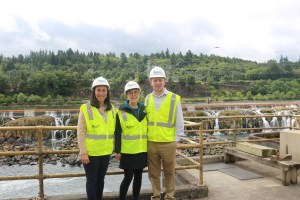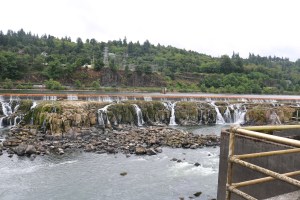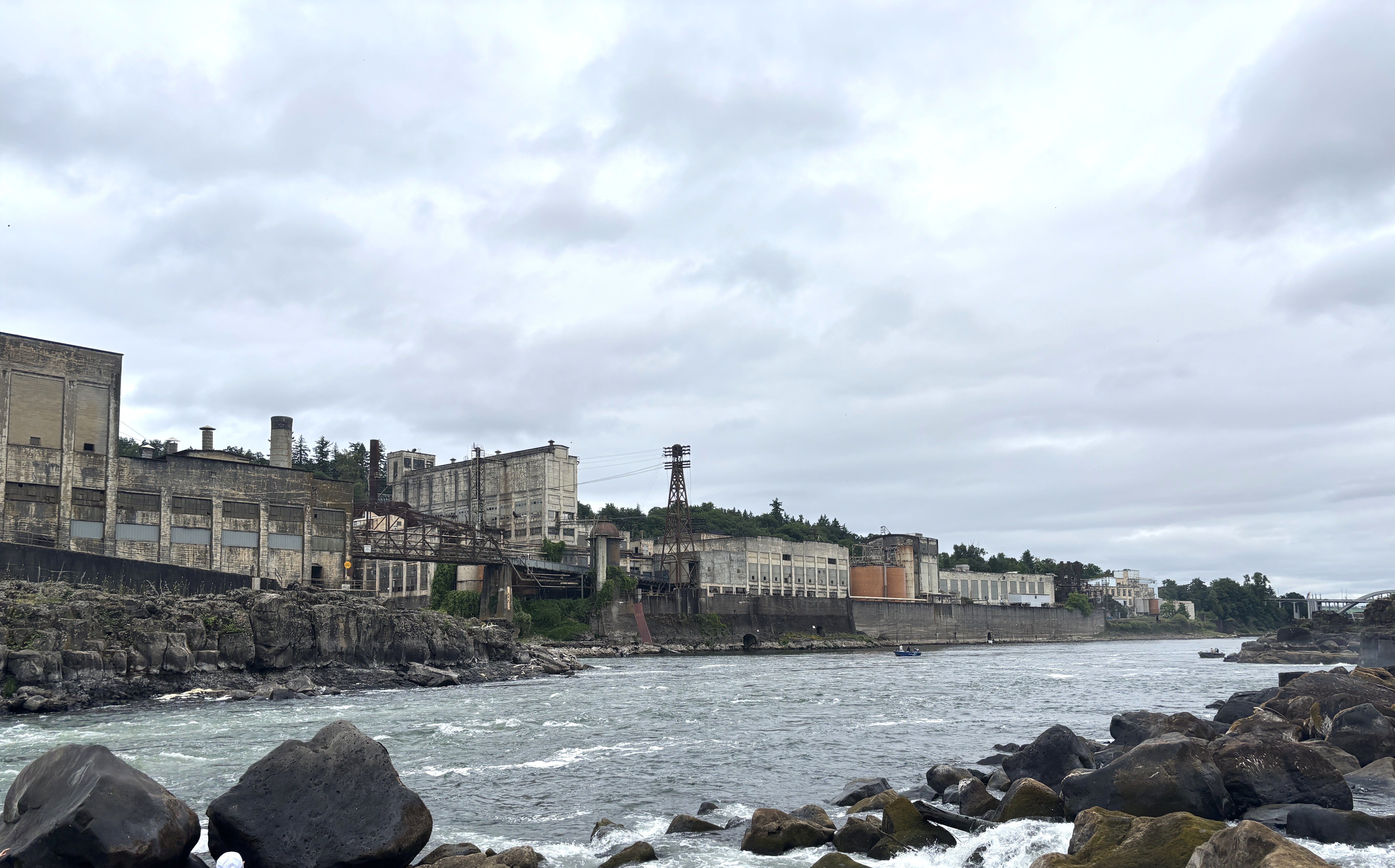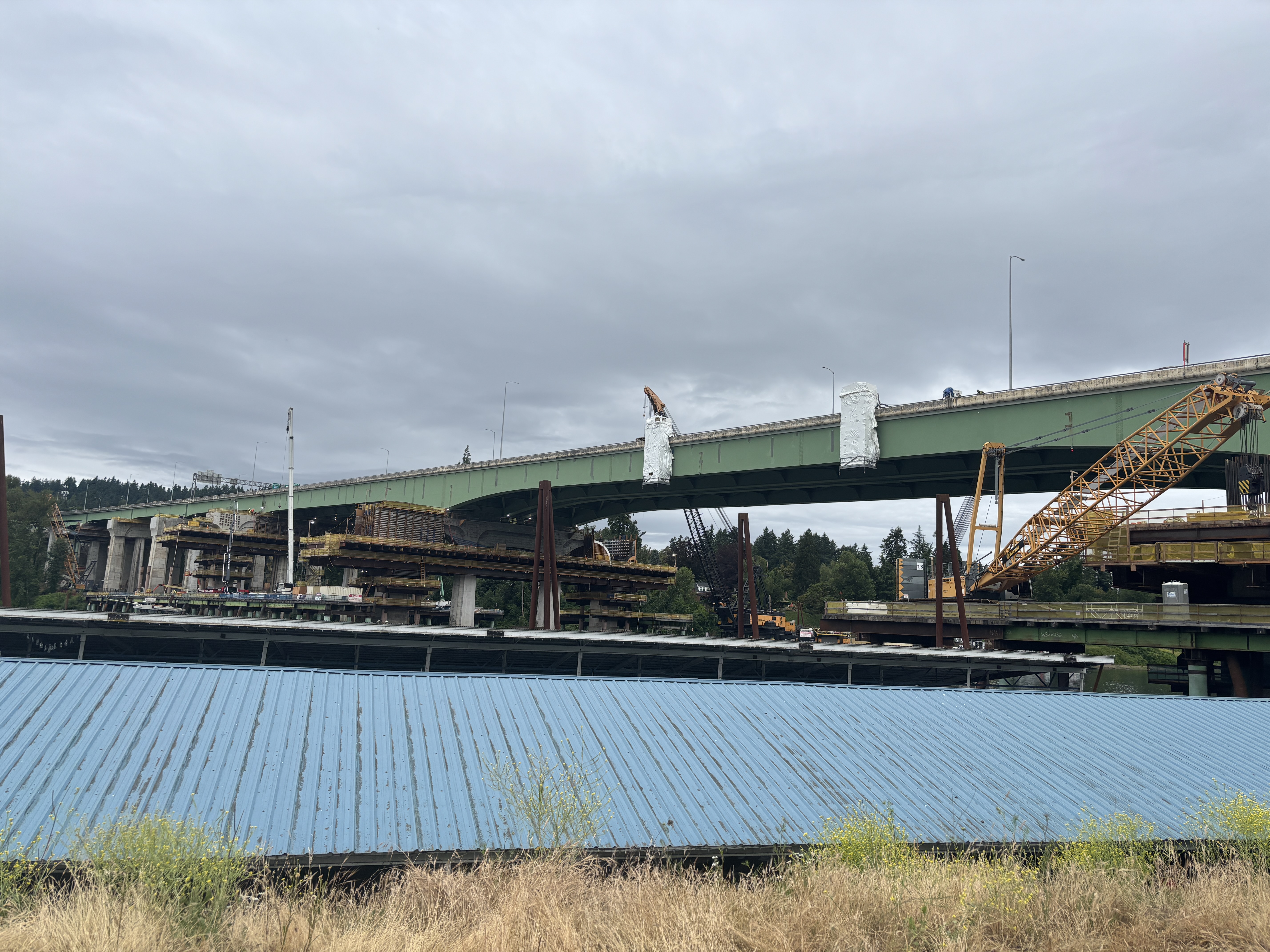Legislature earmarks $45 million for Willamette Falls Trust Inter-Tribal Public Access Project
Published 3:10 pm Friday, June 27, 2025
Public access to Willamette Falls from the West Linn side of the Willamette River took a huge step forward this week, as the Oregon Legislature allocated the Willamette Falls Trust $45 million to acquire land at the falls for the Inter-Tribal Public Access Project.
The allocation was part of a last minute “Christmas tree” bill containing funding for all sorts of initiatives and projects. As of Friday, June 27, with just a day to go before the legislative deadline, the bill appeared poised to pass both chambers.
The Willamette Falls Trust — a partnership of the Confederated Tribes and Bands of the Yakama Nation, the Confederated Tribes of Siletz Indians, the Confederated Tribes of the Umatilla Indian Reservation and the Confederated Tribes of Warm Springs — initially asked lawmakers for $50-75 million to acquire about 60 acres of land on the West Linn side of the falls.
The falls, a 40-foot u-shaped basalt formation in the middle of the Willamette between West Linn and Oregon City and the second-largest waterfall by volume in the United States, was a significant site for Indigenous people from around the region for thousands of years. Archeologists have found evidence of native peoples at the falls from as far back as 7,000 to 12,000 years ago. Today, the site remains an important spot for regional tribes to collect traditional first foods like salmon and lamprey.
However industrialization of the surrounding area, which took place in the 19th and 20th centuries, made the falls much harder to access and they are now only reachable by boat. The trust hopes to change that while honoring the important tribal and industrial history of the area.

West Linn City Attorney Kaylie Klein, Willamette Falls Trust Executive Director Kate Brown and West Linn Mayor Rory Bialostosky toured property around Willamette Falls that could eventually become a part of the Inter-Tribal Public Access Project. (Staff photo: Holly Bartholomew)
Next steps
With the funding allocation from the Legislature, the trust hopes to move forward with acquiring property at the falls within the next year to 18 months, according to former Oregon governor and current executive director of the trust Kate Brown.
The land eyed by the trust includes a portion of Moore’s Island and the uplands area above the falls. Moore’s Island sits just between the falls and the adjacent navigational locks. The property is currently owned by both Portland General Electric, which operates its TW Sullivan hydroelectric facility at the falls, and Belgravia. Much of the property was home to a large paper mill for a century and half. Most recently the mill was known as the Willamette Falls Paper Company, which announced plans to close late last year.
Though the trust had been studying the feasibility of public access at the falls since 2023, Brown said the closure of the paper company has changed the organization’s focus. While the trust was initially hoping to build its project alongside the mill, now it hopes to transform the mill property into a park or national heritage site.
Brown emphasized that community discussions, to take place after the property acquisition, will help determine what the transformation will look like. At the same time, the project will also align with a transformation of the broader Willamette River waterfront area currently in the planning phase at the city of West Linn.
West Linn’s Waterfront Vision Plan encompasses about 250 acres along the river from the Abernethy Bridge to the city’s historic Willamette business district, including the property the trust hopes to acquire.
West Linn Mayor Rory Bialostosky said the city’s plans are fluid, but the trust and the city are working in tandem — a sentiment echoed by Brown.
“Opening this up to the community and the region is our North Star. We want to dream big,” Bialostosky said.
While lauding the contributions associated with industrialization around Willamette Falls — the Willamette Falls locks allowed goods to flow to and from the Willamette valley to Portland and beyond, while the Willamette Falls Electric Company helped to power Portland with the nation’s first long-distance electric transmission line and the mill created jobs processing lumber — Brown lamented that they came at the expense of public access to the falls.
“It’s a tragedy and an anomaly of Oregon’s values that there’s not access to this wonder of the state and of the United States,” Brown said.
While Brown said there is no way for the trust to return the area around the falls to what it was before the industrialization, the aim is to“re-wild the built environment.”

Willamette Falls has been an important site for regional indigenous tribes for thousands of years, but the area also became a hub for industrialization in the 19th century. (Staff photo: Holly Bartholomew).
Partnerships
In addition to the tribal partners and the city of West Linn, the trust is in conversations with both the Metro regional government and Clackamas County to partner on the project. Metro and Clackamas County previously worked with the trust on the Willamette Falls Legacy Project, a planned public walkway on the Oregon City side of the falls.
Work stopped on the legacy project in 2022 after the Confederated Tribes of the Grand Ronde, one of the original trust members, withdrew as both a project partner and a trust member.
The Grand Ronde, which now owns the Blue Heron Paper Mill property overlooking the falls from Oregon City, asked Gov. Tina Kotek and state leaders to hold off on granting funds to the trust for the Inter-Tribal Public Access Project.
“Proponents are presenting this project as returning land to Oregon’s tribal nations, however the WFT excludes CTGR, which is the Tribe of record in the area, and includes an out of state tribe,” Grand Ronde Tribal Council Chair Cheryl Kennedy wrote in the letter to Kotek.
However, Brown and the trust have stated that the Grand Ronde is welcome to re-join the trust.
“We are holding space for all tribes with connections to the falls,” Brown said.
Brown added that the trust hopes to even include tribes from across the nation in its work.
In addition to the $45 million from the Legislature, the trust could also acquire funds from Metro previously set aside for the legacy project. While some of that $30 million will now go toward the Grand Ronde’s tumwata village project at the former Blue Heron site in Oregon City, a portion of it is still available for the trust, Brown said.
Whether all of that potential funding will be enough to cover purchasing the identified 60 acres of PGE and Belgravia property is still to be seen.
Though the trust did not receive the full $50-75 million it asked for, Brown said the Legislature’s allocation of $45 million is “instrumental.”
“It’s a keystone investment in this effort and it helps make this dream a reality for the community, for the Pacific Northwest, for the entire country,” Brown said.






